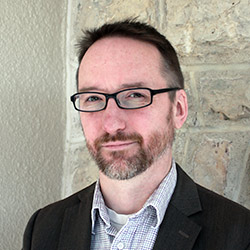
USask to launch new applied computing degree program
The Applied Computing Program will teach practical skills for a variety of high-paying careers
By Chris Putnam
A new interdisciplinary program in the University of Saskatchewan (USask) Department of Computer Science will prepare students for careers in fields as diverse as video games, agriculture, mining and banking.
The Applied Computing Program will begin accepting undergraduate and graduate students in May 2022.
Department of Computer Science head Dr. Kevin Stanley (PhD) said his department started with one premise when designing the new program: that computer science is “the technical substrate of our civilization.”
“Computer science is to the Information Age as mechanical engineering was to the Industrial Age—as smithing was to the Iron Age. And so if you want to be involved in building our civilization, you should be involved in computer science.”
In other words, computers are everywhere—and their importance to life, society and the economy is only growing. No matter what sector you hope to work in, computer science skills will be an asset.

“Because that’s often what’s missing. We hear this all the time from our industry partners. On the business side, they say, ‘We can hire business people, or we can hire computer people, but we can’t hire computer business people,’” said Stanley.
The computer science department partnered with other departments across the College of Arts and Science and USask in creating the Applied Computing Program. Students will take a core set of courses from the Department of Computer Science, leaving room for courses in their field of choice taught by partners such as the Department of Art and Art History, the Department of Geography and Planning, or the Edwards School of Business.
The undergraduate Applied Computing Program will offer a choice of five streams leading to Bachelor of Science degrees. Two of the streams—bioinformatics and interactive systems design—are currently standalone programs that will be moved under the applied computing umbrella in 2022. The other three streams are brand new: business, data analytics and geomatics.
The five distinct streams—chosen based on areas of teaching and research strength at USask—make the undergraduate Applied Computing Program the first of its kind in Canada.
USask’s traditional computer science BSc programs will continue to be offered alongside applied computing for students seeking an in-depth understanding of computer science.
Xudong Li, a graduate of the computer science BSc program, is currently pursuing his second bachelor’s degree at USask. Li chose to study interactive systems design—which combines courses in art, psychology and computer science—to extend his knowledge of user interface and game design.
“Most tech companies have both design and developer teams. It may help me be more competitive if I have skills in both design and developing,” said Li.
Students of all five applied computing streams will be eligible to take part in the Computer Science Professional Internship Program, which offers practical work experience at participating companies.

Li has been placed on a 16-month internship with a Saskatoon technology company since spring.
“I chose to join the (internship) program because it helps me earn industrial experience. Also, I can learn many things that I do not have the chance to learn in the university,” Li said.
A graduate version of the Applied Computing Program will also launch in May 2022. This open-ended master’s and PhD program will accept students from a wide variety of academic backgrounds. No previous computer science education is needed.
“In the past it was very difficult, for example, for a psychologist who wants to work in design, or an epidemiologist who wants to learn how to lift the hood of the models they’re using, to enter a computer science graduate program. The Applied Computing Program opens the door to people like that,” said Stanley.
“This will provide a very interesting career path for a lot of people who probably would have shied away from a degree in pure computer science, but really see the value in computing as a tool.”
Five streams of applied computing
The new undergraduate Applied Computing Program will offer students a choice of five concentrations, three of which are brand new at USask.
Bioinformatics
Solving problems such as developing COVID-19 vaccines or breeding new crop varieties requires software able to analyze huge quantities of biological data. “Bioinformatics is the discipline that creates such software and applies it to tangible problems that have real-life impact,” says Department of Computer Science professor Dr. Tony Kusalik (PhD).
Business
University graduates with knowledge of both technology and business practices are in high demand. Traditional businesses such as banks are seeking programmers and data analysts, while tech companies want “client-facing people who can speak the language of technology and interact meaningfully with clients,” says computer science head Dr. Kevin Stanley (PhD). Applied computing students in the business stream will learn the fundamentals of both worlds.
Data Analytics
Many commentators have quipped that “data is the new oil.” Data analysts are highly sought after in industry, healthcare, education and governance for their ability to refine raw data into useful trend forecasts. The data analytics stream “is meant to unleash the students’ creativity and empower them with skills that are universally applicable,” says Dr. Artur Sowa (PhD), head of the Department of Mathematics and Statistics.
Geomatics
“Whether it is satellite imagery of crops, check-in data from social networks, or hospital records tracking a contagious disease, (geomatics) students will learn to place the data we generate into the world we share, and will be able to pursue careers in any field where spatial data matters,” says Geography and Planning professor Dr. Scott Bell (PhD).
Interactive systems design
“People who build interactive systems that are used by people need to understand more than just how to build the technology; they need to understand the people who use it,” says Dr. Regan Mandryk (PhD), professor in the Department of Computer Science. Interactive systems design teaches students to build effective, aesthetically pleasing, functional front ends for apps, websites and games.

